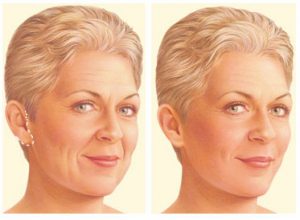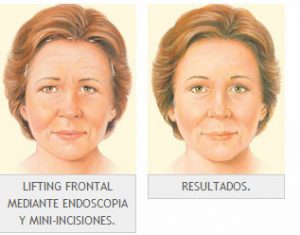Facelift
EThe facelift , also known as facial rejuvenation surgery, or rhytidectomy, is a procedure that aims at reducing neck and facial sagging.
Fat and facial muscles affected by the passage of time and gravity, lose their original tension.The facelift achieves facial rejuvenation by extracting excess fat, tensing underlying muscle and tightening face and neck skin to improve the most visible signs of aging.

Indications
The best candidates for a facelift are those who show signs of sagging but have a certain skin elasticity and strong well defined bone structure.
Most patients are between 50 and 70, but this can be performed successfully in older people.
First Visit
A personal visit is the first step for anyone who is thinking about a facelift.
During the interview, Dr. Saez will ask for their health and their expectations.
From individualized evaluation will explain the technique and the results that can be achieved with surgery.
Procedure
The most common technique is explained below. However, there may be slight variations depending on the physical characteristics of each person.
Incisions are made at the edge of the hair line following the natural contour down the front of the ear to the earlobe and then back to the scalp.
A small incision is made at the neck, under the chin.

Initially the skin is separated from fat and muscle below.
After the muscle and the membrane covering (SMAS) are tensed for a more natural appearance and prolonged results.
To improve the contour, fat is extracted from around the neck and jaw line.
The skin is then stretched and the excess removed, tissue is fixed and the incisions closed.

EIn the front lift (eyelids, eyebrows, forehead, glabellas zone) an incision is made at the forehead, concealed by the hairline.
The skin in this area is separated from the underlying structures, and muscles responsible for wrinkles and excess skin are resected, obtaining a more rejuvenated look in the upper third of the face.

Post-op care
Although each person’s recovery is different, it is common to follow the next steps:
After the operation the usual stay at the clinic is 24 hours, thereafter the patient can be discharged.
THE FIRST DAY:
• It is advisable to moderate sleep in bed or on the couch and maintain the head lifted. You should not manipulate the bandage.
DURING THE FIRST WEEK:
• You must take moderate rest.
• The bandage will be removed after 3 or 4 days.
• The stitches will be removed (although we don’t usually use visible sutures).
• We recommend performing a lymphatic drainage.
AFTER THE FIRST WEEK:
• You can progressively start to work and return to normal activity.
AFTER THE FIRST MONTH:
• Inflammation will reduce and you will start to see more defined final results.
• You can do more vigorous exercises.
Results
This intervention provides improvement to the visible signs of aging in the face and neck, giving patients more fulfilment with their new facial image.
The results achieved with a facelift can not stop the aging process but it can turn back the clock.These results can be maintained for many years.
However, you must remember that your face is not immune to the effects of fluctuations in weight or age. Therefore periodic monitoring is recommended, you will receive instructions on how best to preserve the initial results.
This treatment can be combined with other treatments to improve and maintain the results, such as mesotherapy, growth factors, peelings, fillers or wrinkles treatment with botox.
